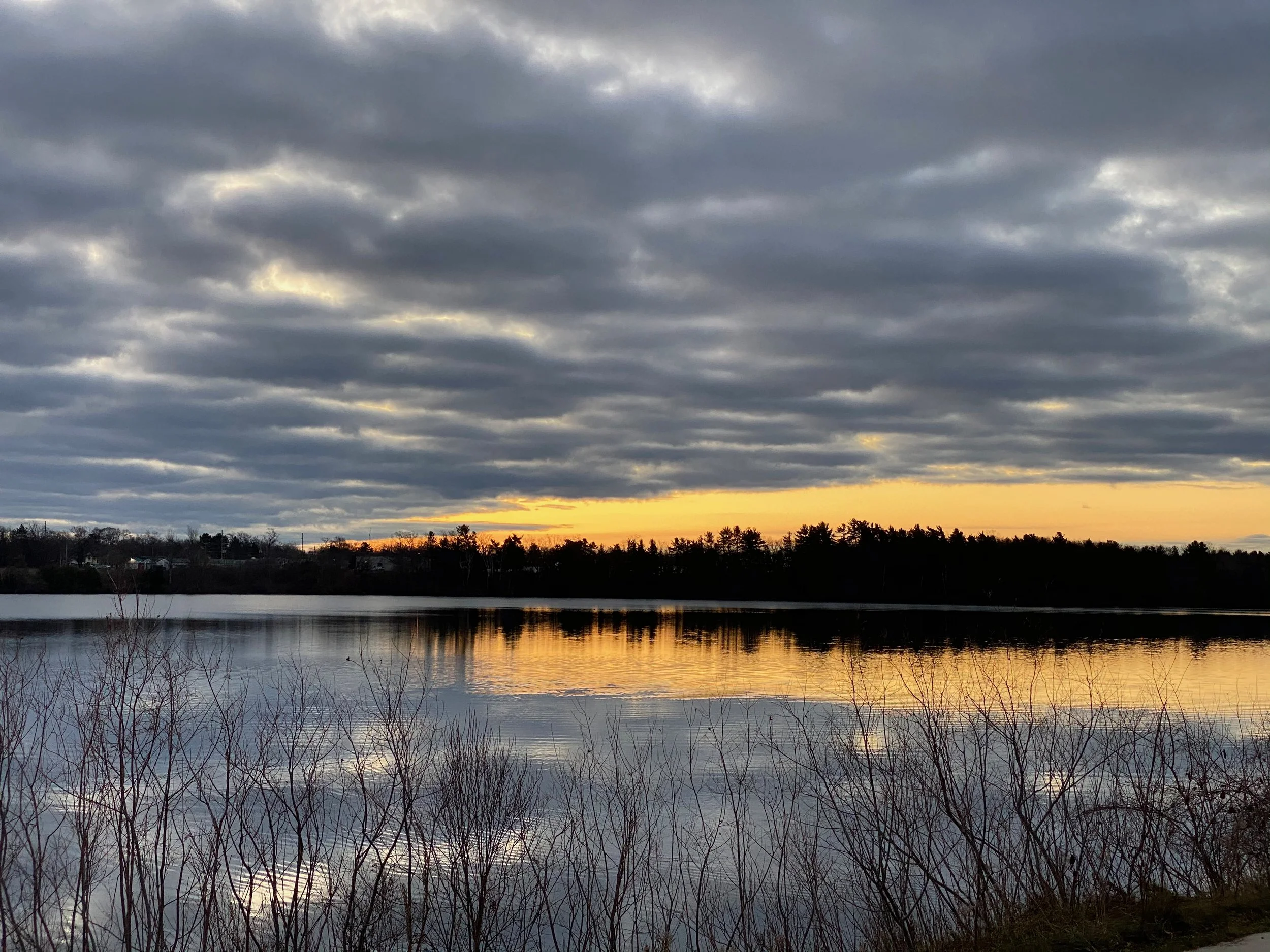Great Lakes Geology
-
The Great Lakes basin contains about 85% of North America’s freshwater, and about 20% of the world’s freshwater. It is a relatively new (geologically speaking) feature and was formed through a series of glacial activity that started 2.6 million years ago, the most recent glaciers having receded only 10,000 years ago. During that time the glaciers advanced and receded in cycles and all the while the basin was carved out, filled with water, drained, damned up by the next glacial advancement and filled again with meltwater, drained again somewhere else, damned again by ice and filled, over and over and over.
-
Recently (in the last 10,000 years) the water level has steadily been falling, and the old shorelines can still be found in the forests, if you know what to look for. Before the water level rose and fell this last time, the water levels were extremely low, so low that the bay on which we are sailing was mostly dry, and the Boardman river ran its course between the low hills toward the distant shore to the north. Boulders arranged into drive lanes for hunting have been found beneath our feet, where the people who lived here hunted and lived in the forests. Then the water levels rose again, slowly, and ended up 100 feet over our heads, before falling again to where they are now.
-
As the glaciers advanced they pressed forward with unimaginable force, bulldozing the landscape. But as they retreated (think melting back faster than they advanced forward) the gravel and boulders and soil locked up in the ice was dropped, leaving all kinds of landforms behind. Drumlins, for example, are long cigar shaped hills that are oriented with the glacier’s direction of travel (NNW to SSE). Moraines are where the glacial advancement slowed and paused, forming large mounds of glacial till (mixed sand, gravel and clay) as the ice melted, like the line of sand a wave leaves behind at the point on the beach where it stops and retreats back into the lake. There are many other features that you can spot, too. If you look at the shape of the hills along the bay, you will notice that they have a “saw tooth” shape to them. This is from the glacial bulldozing, and as the glaciers retreated they left these sheared off hilltops. They are steeper on their south sides, and more gradual on their north sides.
-
After the burden of the ice melted and flowed away, the weight on the earth’s crust lessened, which had caused it to sit a bit lower in the earth’s mantle like a heavily-laden ship. The sudden loss of the glacier's weight has allowed the crust to “rebound” back up, like a memory foam mattress does after you press it with your hand and then take your hand away. This is a cause of the dropping in lake levels. It’s more to do with the fact that the great lakes are actually getting shallower from the bottom up as the earth’s crust regains its normal posture in the absence of the glacial weight.
-
The bedrock in this region is extremely old, containing fossils from the great “Cambrian Explosion,” a time period known for significant sea life evolution before much life had moved onto the land. Fossils can be found almost everywhere you look. Go to a beach and you will find fossils of shell imprints, corals, and even the fossils of an organism called the trilobite. The trilobite was a hard shelled, segmented creature that swam and hunted other organisms. You will also find Petoskey stones, which are 350 million year old coral fossils that are very rare and are only found in northern Michigan. Remember that these fossils are of life forms that evolved in warm, shallow seas, when the North American continent was much farther south (due to tectonic crustal migration). After the seas dried up and the sediments containing these creatures hardened into rock, they waited until they were scoured up from their quiet depths by the glaciers, which scattered fragments of the rock throughout the region, to be rounded and polished by the waves of the Great Lakes and picked up by one of us.

